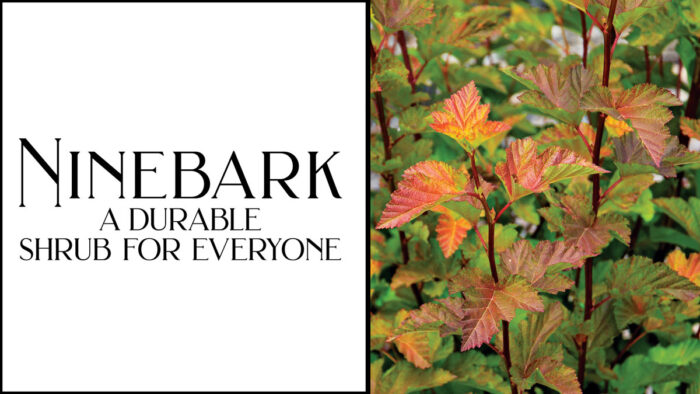
Common ninebark (Physocarpus opulifolius) is one of those shrubs that I learned about in college and then forgot about until sometime around the Millennium, when purple-leaved Diabolo® transformed a humble native shrub into a fashionable garden plant. While not the first color form, Diabolo® grabbed attention and clearly spurred breeders to get to work. What followed was a raft of colorful selections, from duskier purples to eye-catching yellows. Indeed, enhanced color is the modern ninebarks’ cachet—burgundy, purple, yellow, red, orange, and coppery leaves in spring, summer, and fall. As green shrubs go, ninebark is serviceable albeit ho-hum; colorized, and it becomes something special.
See more:
Brand-New Ninebark Shrubs Showing Promise
How to Grow and Care for Ninebark Shrubs
This shrub has its detractors; after all, ninebarks can be large, coarse, and gangly. In his tome on woody plants, Michael Dirr archly dismisses ninebark: “The Minnesota Landscape Arboretum has a large collection of ninebarks and after looking over the entire group, I still came away with the opinion that about anything is better than a Physocarpus.” To be fair, that is his opinion from the 1990s, and he was referring to the world before Diabolo®.
It seems to me that ninebarks may still be a bit underappreciated, but I hope that’s not true for much longer. Perhaps the market saturation of the original colorized options—Diabolo®, Coppertina®, and ‘Center Glow’—made them ubiquitous, but their disease problems made them vexing. Newer introductions offer enhanced leaf colors, smaller habits, and disease resistance. Until recently, I had evaluated only three ninebarks in my career; that’s why I was eager to grow and compare the newest ones against the old standards. The trial is ongoing, but initial results are promising. So now is a good time to give ninebarks another look, or maybe a first look.
Ninebark Trial Parameters
The Chicago Botanic Garden is currently evaluating 26 different ninebarks in comparative trials that started in 2019.
How long: Three years into a six-year study
Zone: 5b
Conditions: Full sun; well-drained, alkaline, clay-loam soil
Care: We provided minimal care, allowing the plants to thrive or fail under natural conditions. Besides observing their ornamental traits, we monitored the plants to see how well they grew and adapted to environmental and soil conditions, while keeping a close eye on any disease or pest problems and assessing plant injury or losses over winter.
Top-Performing Ninebarks
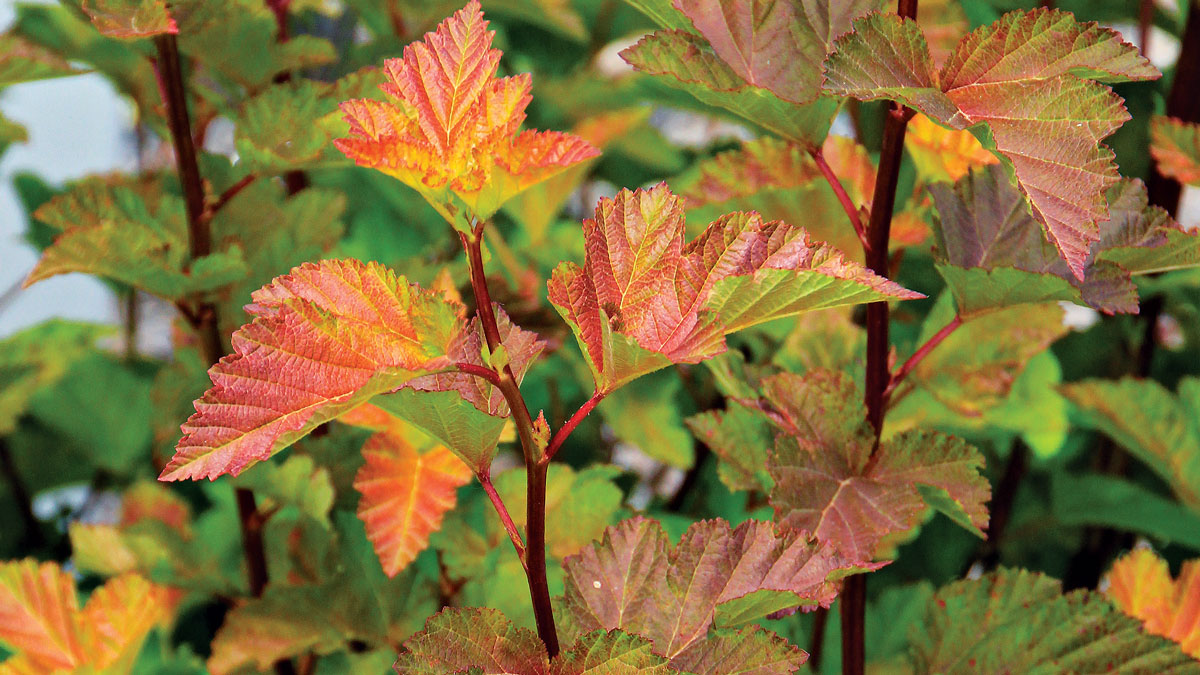
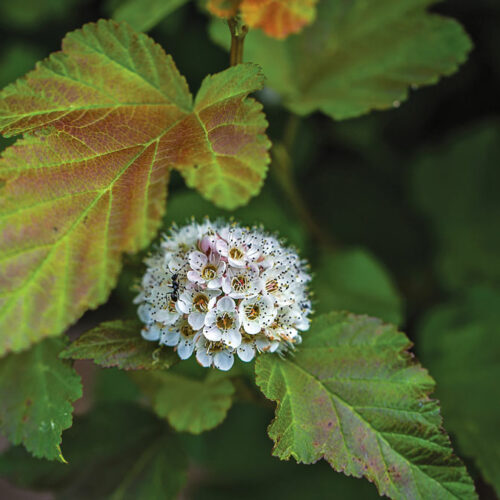
Amber Jubilee™
The vibrant foliage of Amber Jubilee™ is most radiant in spring, when it glows deep orange rather than the orange-bronze of similar cultivars such as ‘Center Glow’ or Coppertina™. The color shifts in midsummer to green with bronze-flushed, golden-yellow terminal leaves, and finally to an autumnal blend of orange, red, bronze, and purplish green. The white flowers are pleasing, and butterflies love them, but the kaleidoscopic color show is longer lasting and more satisfying. Amber Jubilee™ is a broad, vase-shaped plant with arching branches. Its light tawny twigs pair nicely with the light tan-gray exfoliating bark, which looks almost white when the branches are bare.
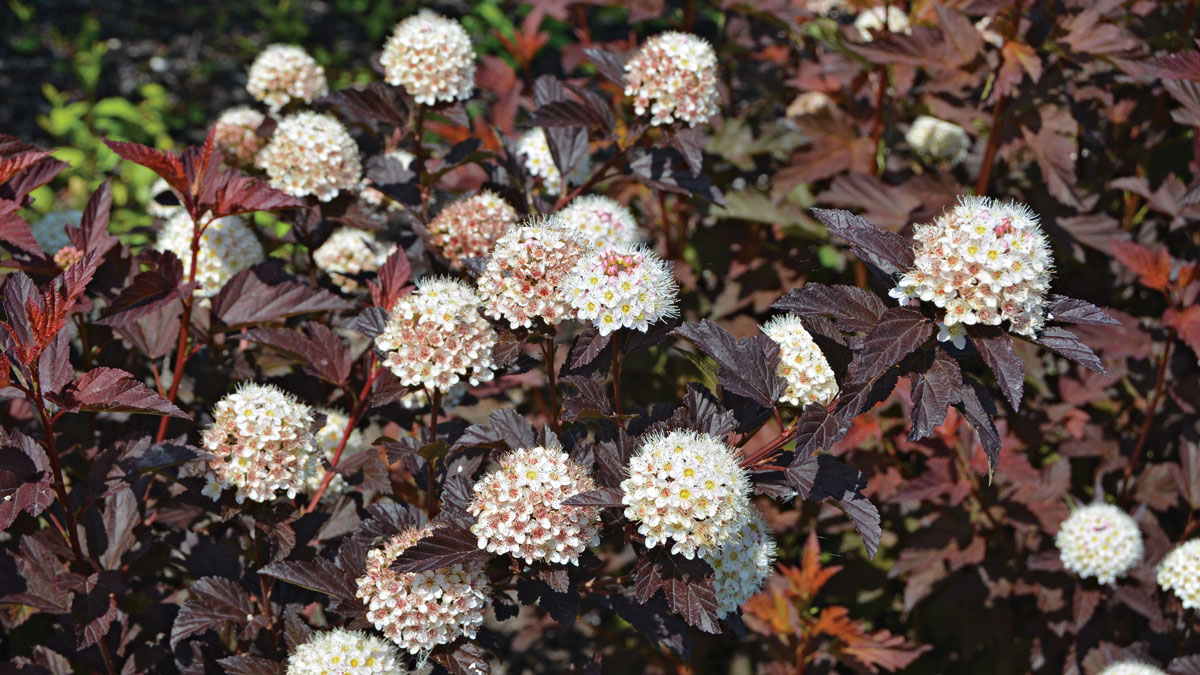
Red Robe™
Red Robe™ is an evolution of exquisite colors from spring to fall. Leaves emerge glossy orange-bronze but quickly lose luster as they darken to bronze-brown with orangey overtones. The summer mantle of dark burgundy—flecked with golden-orange at the tips—glows red when backlit by the sun and becomes ruddier as summer winds down. I have not seen Red Robe™ at its full size—6 to 8 feet tall and wide—but am kind of giddy thinking about a big vase-shaped plant clad in all those rich colors. White flowers, flushed with purple, give way to bright red fruit clusters that ripen to deep burgundy in fall. Dark red-purple twigs fade to burnished copper in winter, contrasting beautifully with the hoary gray peeling bark.
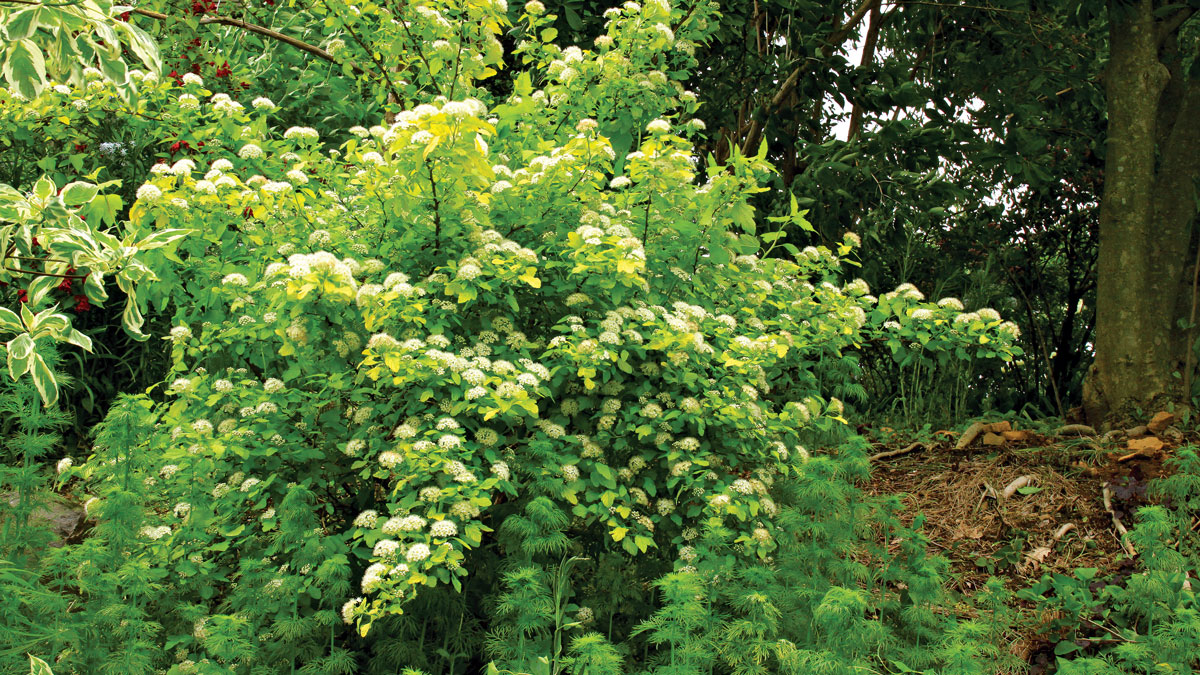
‘Dart’s Gold’
‘Dart’s Gold’ has impressed me greatly, and more so for being more of an old-timer; there is never a minute that its colorful foliage disappoints. The brilliant golden yellow of its new leaves rivals that of spring-blooming forsythias! Early summer is a study in orange and gold—there is a nuanced gradation from top to bottom of bright orange, golden-orange, golden-yellow, and yellow-green. Although the foliage fades to mostly green in late summer, it turns brighter yellow again in fall with hints of coppery orange that glow like small flames at the tips. There are clusters of white flowers in late spring, but honestly, the dazzling leaves hog all the attention. The compact, rounded habit—4 to 5 feet tall and wide—is not as well-branched as that of some dwarf varieties, but it has more internal branching than many larger cultivars. Dark tawny twigs and light tannish bark stand out in a snowy winter garden.
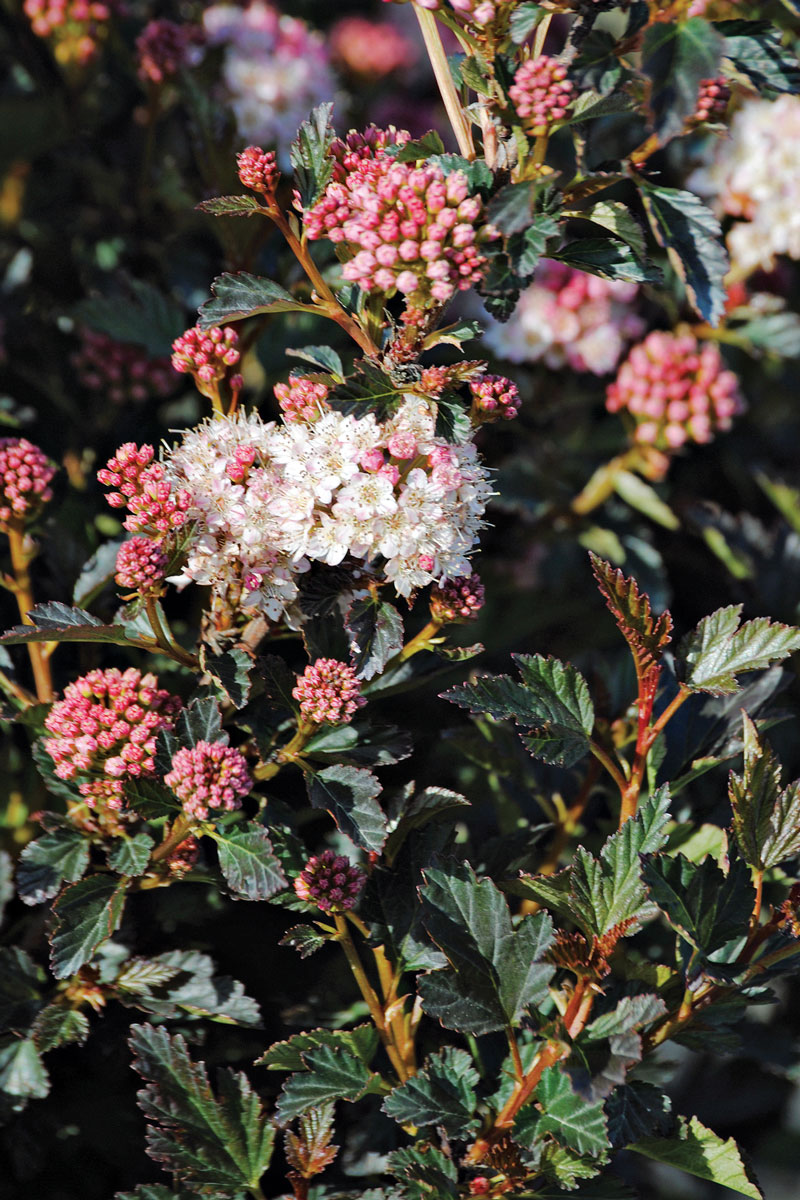
Tiny Wine®
Tiny Wine® is one of the original compact cultivars with small leaves and many slender side branches. The leaves, held on coppery twigs, open bronze-green and then age to dark burgundy-green before settling in late summer on deep green with a burgundy overlay. In fall, red smolders from the center outward; the final mix of burgundy and red is quite good. Pink-flowered Tiny Wine® shares a similarity to Sweet Cherry Tea™, but its leaf coloring is darker. In the winter landscape, its well-branched habit shows best, with cinnamon twigs sprouting from exfoliating tan-gray bark. This variety stays trim and neat.
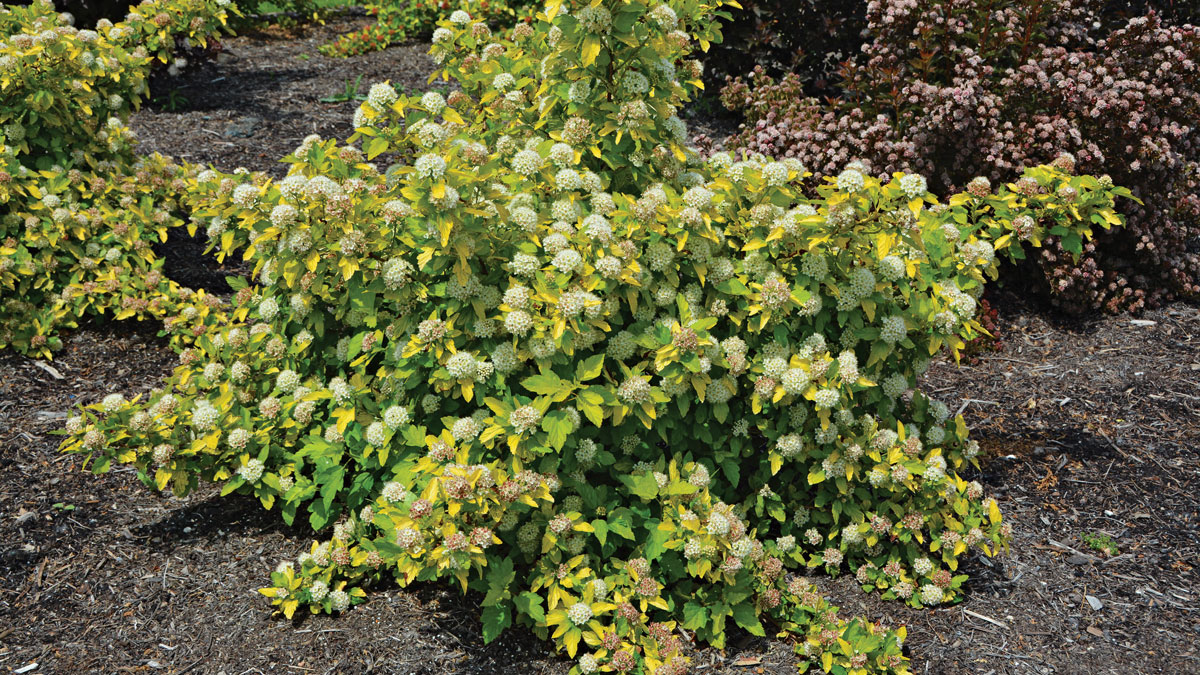
Festivus Gold®
Festivus Gold® is as luminous as ‘Dart’s Gold’ but is even more radiant, if that is possible. The golden yellow spring foliage matures to yellow-green, with terminal leaves remaining bright yellow all summer. In fall the leaves are flushed with orange and bronze but never really lose their golden glow. The tidy, rounded habit with ascending light copper-colored branches is more compact than ‘Dart’s Gold’—3 to 4 feet tall and wide—making Festivus Gold® perfect for small landscapes. The tan exfoliating bark reveals soft salmon tones, which reminds me a bit of river birch. The best part, Seinfeld fans, is that airing grievances and engaging in feats of strength are not required to enjoy this plant.
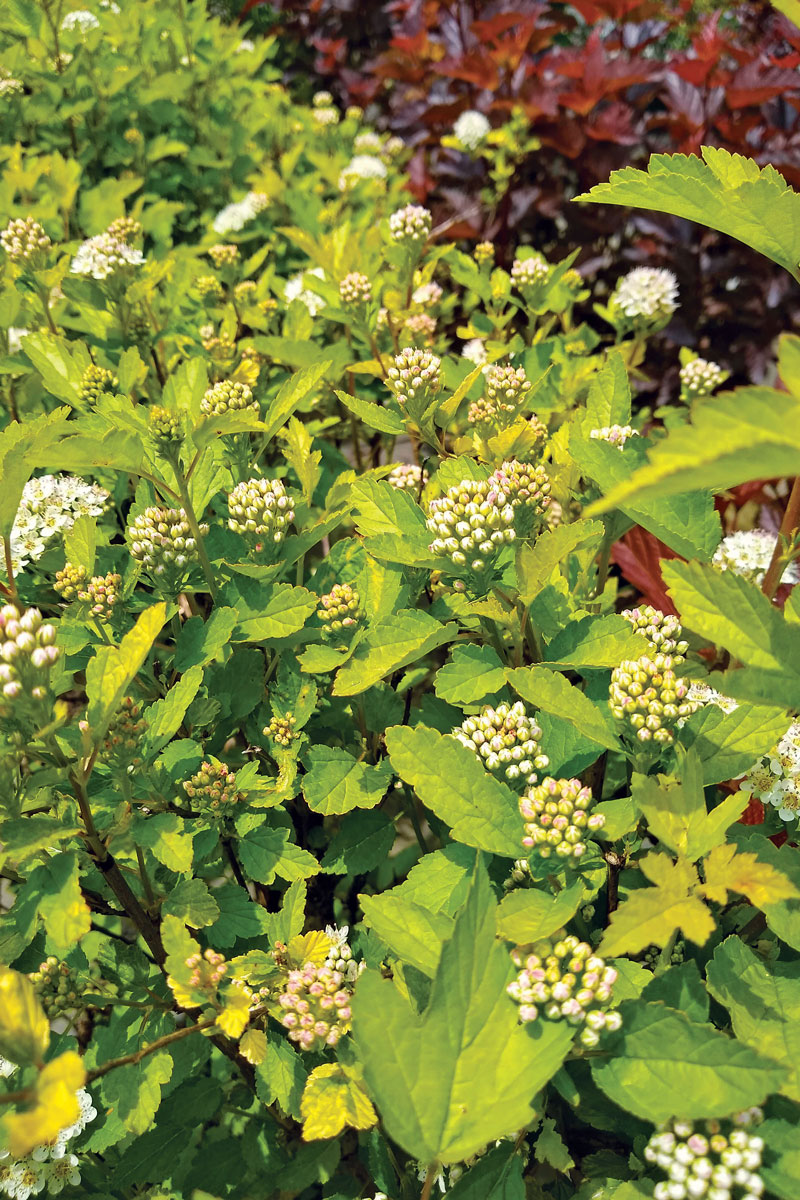
Tiny Wine® Gold
Tiny Wine® Gold is the yellow version of Tiny Wine® and features a similarly tight, refined habit and size, small leaves, and increased branching. White flowers, opening from pink buds, liberally pepper the branches in late spring. Labeling it simply yellow is lazy—it is in truth a bonanza of color from spring through fall. Leaves open golden green on reddish purple twigs, gradually becoming a mix of yellow and green, with each stem crowned in orange-copper in summertime. Interestingly, fall color develops in reverse—soft orange and yellow with burgundy tinges flush upward from the bottom, leaving the tips green until last. Come winter, twigs fade to tawny above light tannish gray bark; this shows more prominently in the landscape because of the branching pattern.
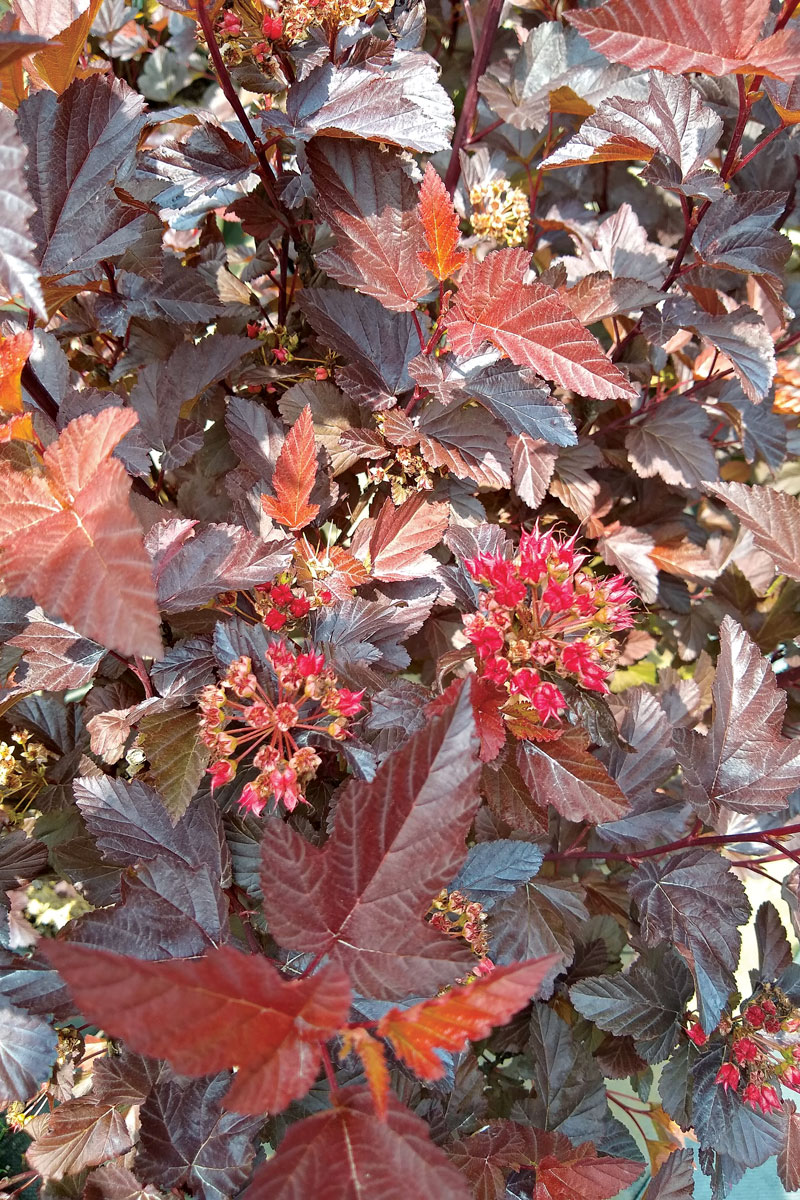
The slightly arching stems of Ginger Wine® are clothed in rich burgundy foliage in summer and fall but start out very differently. The red-orange-bronze leaves are strikingly beautiful against the whitish bark as they unfold. (Game of Thrones nerd alert—the colors at this point remind me of the red and white weirwood trees of Westeros.) The dark burgundy summer twigs mirror the leaf color perfectly; winter twigs are a lighter cinnamon. Much like Red Robe™, the deep burgundy fall color is accented by redder leaves at the tips. The bushy vase-shaped habit looks more open in spring and winter because side branching is less pronounced than on Tiny Wine®.
Richard Hawke is plant evaluation manager at the Chicago Botanic Garden in Glencoe, Illinois.
Sources
- Nature Hills Nursery, Omaha, NE; 888-864-7663; naturehills.com
- Wayside Gardens, Hodges, SC; 800-845-1124; waysidegardens.com
- Rarefind Nursery, Jackson, NJ; 732-833-0613; rarefindnursery.com
- White Flower Farm, Litchfield, CT; 800-503-9624; whiteflowerfarm.com
Fine Gardening Recommended Products

Stihl GTA 26 Wood Cutter with AS 2 Battery and Charger AL 1, Battery Operated
Fine Gardening receives a commission for items purchased through links on this site, including Amazon Associates and other affiliate advertising programs.

ARS Telescoping Long Reach Pruner
Fine Gardening receives a commission for items purchased through links on this site, including Amazon Associates and other affiliate advertising programs.

Fiskars 15" PowerGear Loppers—Sharp Steel Blade Bush and Tree Trimmer
Fine Gardening receives a commission for items purchased through links on this site, including Amazon Associates and other affiliate advertising programs.




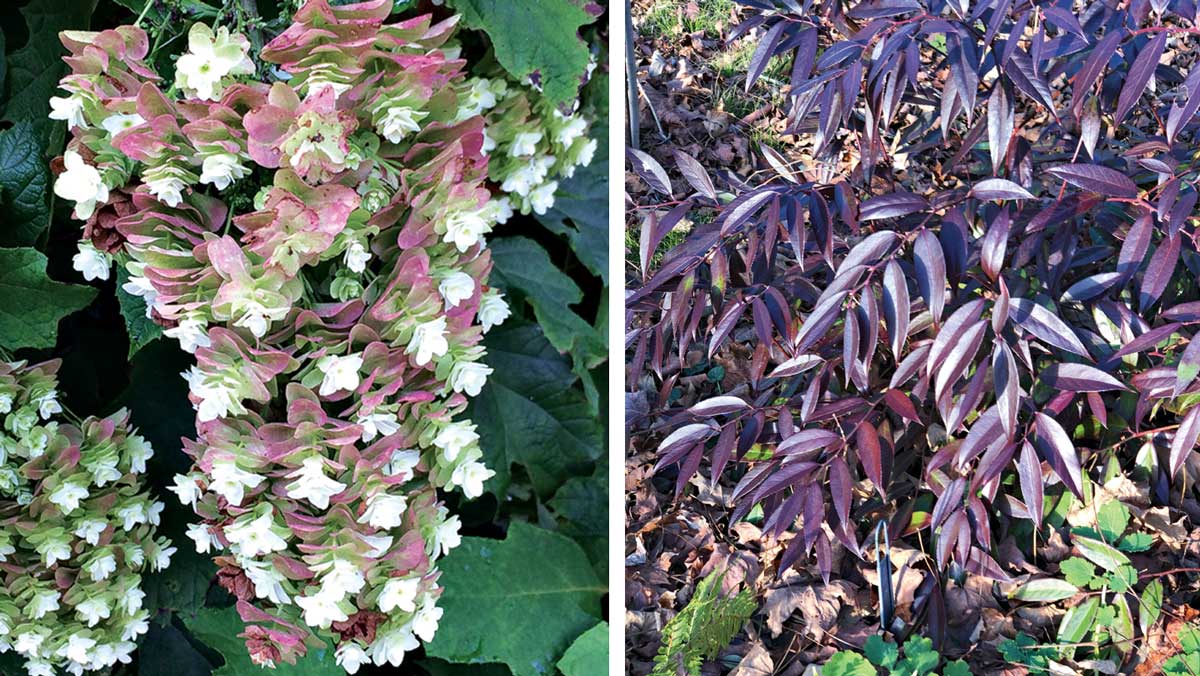

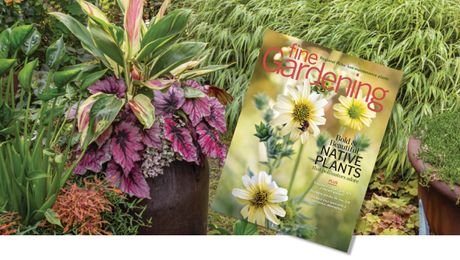











Comments
As green shrubs go, ninebark is serviceable albeit ho-hum; colorized, and it becomes something special. soundcloud downloader 320kbps
Log in or create an account to post a comment.
Sign up Log in